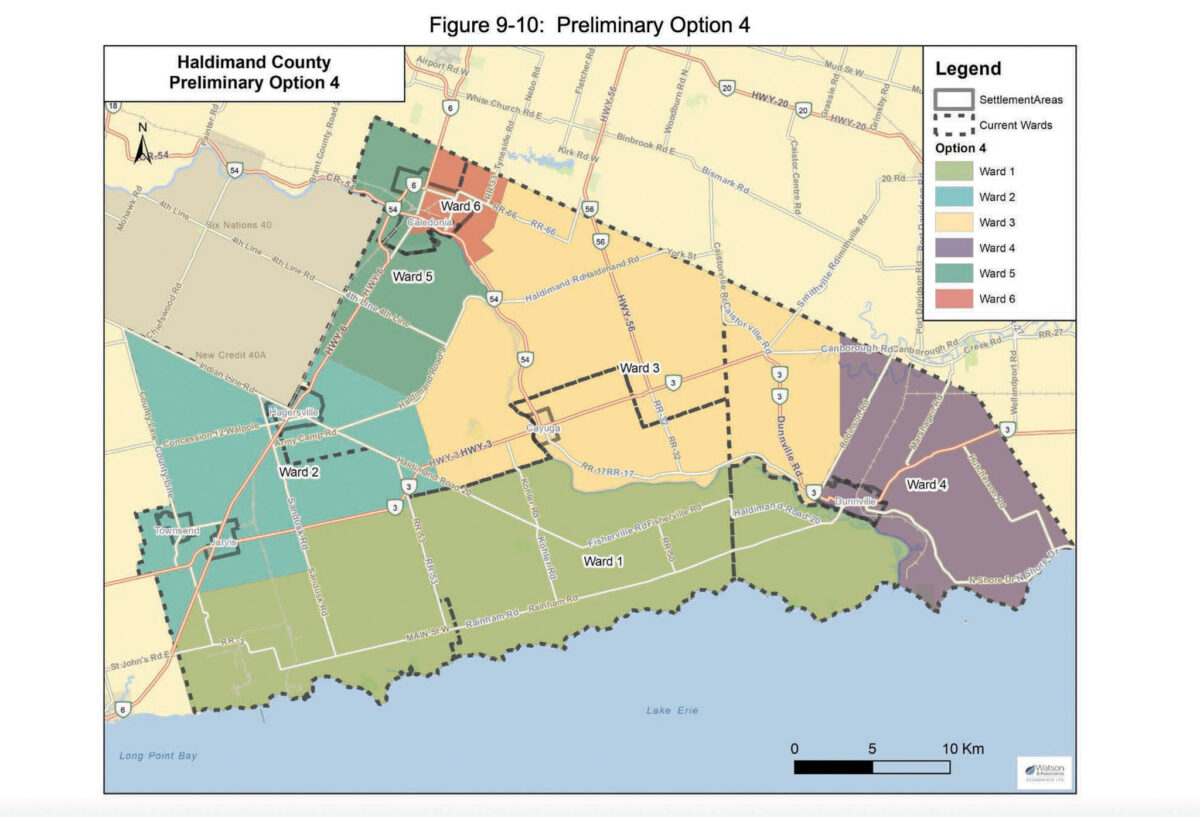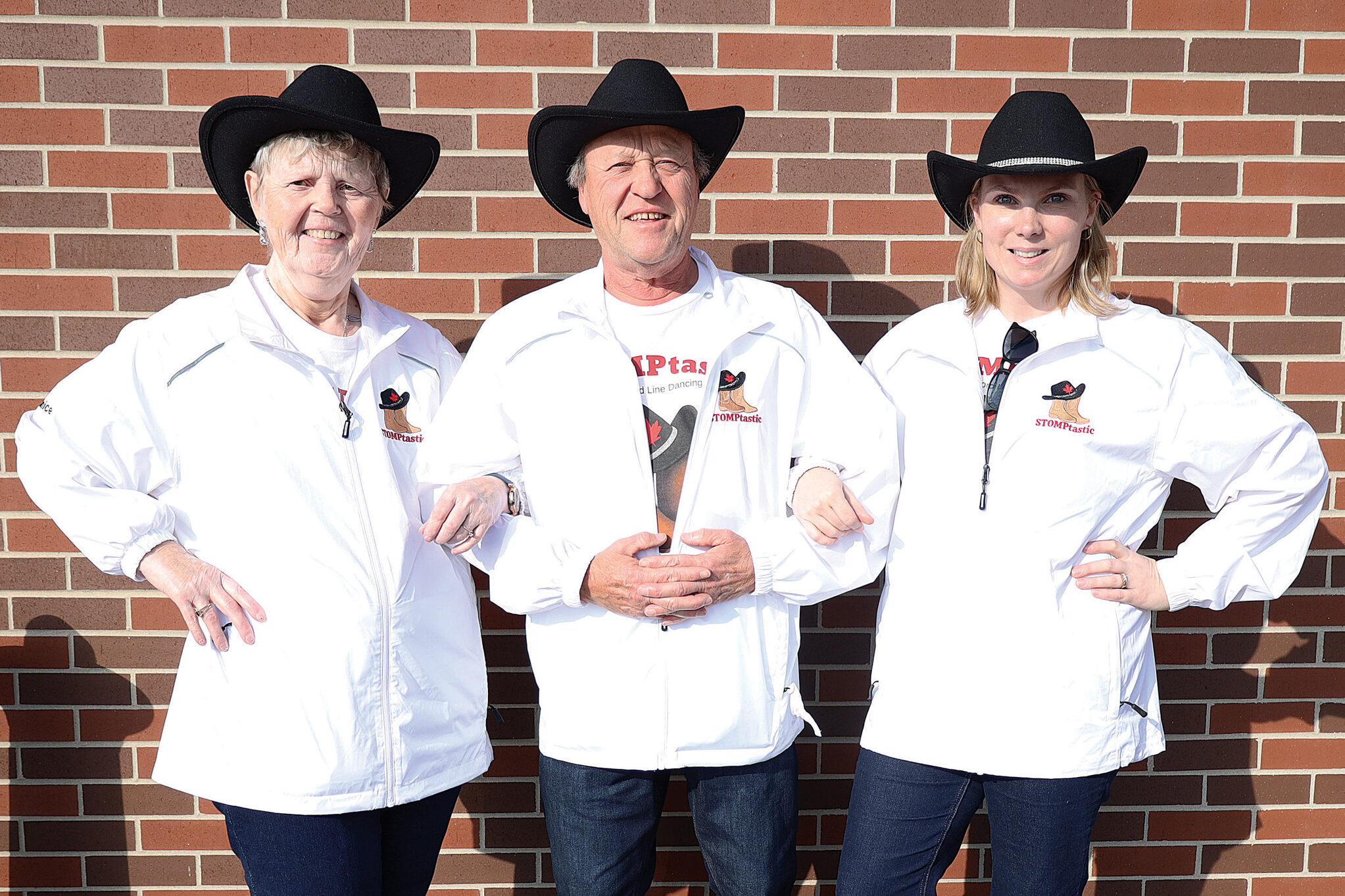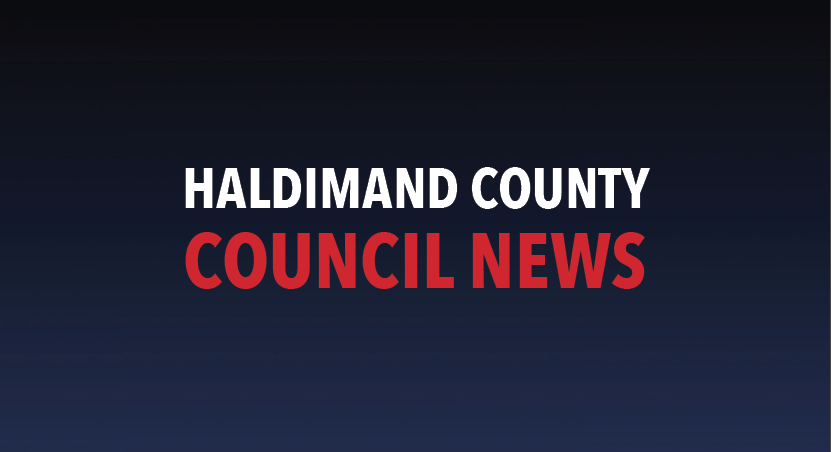HALDIMAND—The Ontario Land Tribunal (OLT) convened for a one-day hearing to consider an appeal by Ward 1 Councillor Debera McKeen challenging the Haldimand County bylaw that created a new seven-ward electoral system.
McKeen launched her appeal before being elected.
Her first argument was that the new configuration failed to meet the guiding principles used to evaluate effective representation, such as population parity, communities of interest, and geographic features.
Second, she noted that when Council passed the bylaw, Wards 1 and 4 were awaiting byelections, and so without elected representation. She said this raised concerns about underrepresentation in the decision-making process for constituents in those wards.

She also objected to the lack of opportunity for public input on the final recommendations before Council adopted them. In her submission, she suggested inadequate communication and transparency from both the consultants and Council throughout the process.
Nathan Kolomaya represented McKeen, arguing the bylaw should be repealed or amended to reflect an alternative configuration presented earlier in the process.
Representing Haldimand were Sarah Premi and Andrea Mannell, who defended the County’s process and outcome.

Premi framed the legal threshold the tribunal must consider, stating that intervention is only warranted where there are “clear and compelling reasons.”
Premi said Council’s decision to adopt the new seven-ward configuration followed a robust process driven by expert analysis and public engagement.
“The configuration provides fair and equitable representation,” she said, noting that the redesign maintained the current two seats in Dunville and divided Caledonia into two wards to reflect its population growth.
Kolomaya countered that the process was rushed.
“This process was unfair,” he said, arguing that Council adopted the bylaw just days after receiving the final report.
He also questioned whether the selected option adequately addressed the anticipated population growth that prompted the ward boundary review. He suggested instead that the tribunal direct Council to adopt Preliminary Option 4, which he said better upheld the guiding principles of effective representation.
The County called three witnesses: County Clerk Chad Curtis; Jack Amendolia of Watson & Associates, the consultants hired to conduct the ward review; and Dr. Robert Williams, an expert in municipal electoral systems.
Curtis provided a detailed chronology of the ward boundary review process, from Council’s April 2023 decision to initiate the review through to the February 2025 adoption of the bylaw.
Curtis testified that the review was declared a term of Council priority in early 2023 and the request for proposal (RFP) for consultants was issued in January 2024. Consultants were hired in March, and a series of public consultations took place through the summer and fall.
“There were multiple opportunities for public feedback,” said Curtis. “We advertised in newspapers, held open houses, and posted recordings and materials online.”
He also addressed a key procedural claim raised in the appeal: that the bylaw was passed while two wards were vacant. Curtis confirmed that while the Ward 1 and Ward 4 seats were unfilled due to an ongoing byelection, quorum was maintained and the County acted within both its procedural bylaw and the Municipal Act.
“The business of the municipality needed to continue,” said Curtis.
Consultants Amendolia and Williams were called jointly as expert witnesses.
Amendolia described how the preliminary options were developed to stimulate discussion and test various configurations against public input and guiding principles.
He said Preliminary Option 4 was among several viable options, but feedback from Council at a November 4, 2024 meeting led to the development of a new configuration that maintained two wards each in Caledonia and Dunville.
“We couldn’t do that in an effective way with six wards,” Amendolia said, explaining that Council’s preference required a shift to a seven-ward structure.
Premi walked the experts through their evaluation of the final option selected by Council, called Final Option 2. Amendolia testified that this option met the standard of effective representation and adhered to the guiding principles, though not all were satisfied to the same degree. He acknowledged that while the option was only “partially successful” in accounting for future population growth, it was “largely successful” in protecting communities of interest and using natural boundaries.
Williams emphasized that the principles were guiding, not prescriptive.
“These are not binding rules that must be adhered to,” he said. “You need to get into that kind of nuance, rather than simply saying the principle says X.”
Kolomaya cross-examined both experts, focusing on the timing and content of the final report.
He asked why a seven-ward configuration was introduced late in the process when earlier public engagement had only considered six-ward options.
Amendolia responded that the consultant team listened to feedback and responded accordingly: “If we would have ignored that, we wouldn’t be doing our job,” he said.
Kolomaya also highlighted the evaluation tables in the consultants’ reports. He pointed out that Preliminary Option 4 received “yes” ratings across all guiding principles, while the final option selected by Council included ratings of “largely successful” and “partially successful.”
When asked which option better maximized the guiding principles, Amendolia maintained that both met the threshold for effective representation.
“It’s not a score. It’s not a ranking,” he said.
Williams also pushed back against what he called a “self-styled scoring system” suggested in the appeal. He said effective representation requires balancing competing priorities and that Council was within its authority to choose from among the options presented.
“Ultimately, Council made the decision based on the information we gave them,” he said.
In their final remarks, both experts affirmed their belief that the process and decision were within the requirements.
“The choice was fair and reasonable based on the guiding principles,” said Williams.
Kolomaya did not call any witnesses, but iterated McKeen’s position that the process leading to the bylaw’s adoption was flawed and failed to consider all viable options equally. He argued that the final option’s weaker performance on future population parity was especially concerning given that population growth was the very reason the review was initiated.
No decision was made immediately.
Tribunal Vice Chair Steven Cooke presided over the hearing and thanked all participants.
Written submissions will be accepted before a final decision is rendered. Cooke set a final deadline of Monday, July 28 for the written responses.
Elizabeth Meneses Del Castillo, Communications & Business Transformation for the Ontario Land Tribunal, told The Press, “While many tribunal decisions are issued within 30 to 60 days of the hearing, some matters may take longer, depending on the complexity of the issues.”
The Press will continue to monitor this topic and provide future updates when available.





